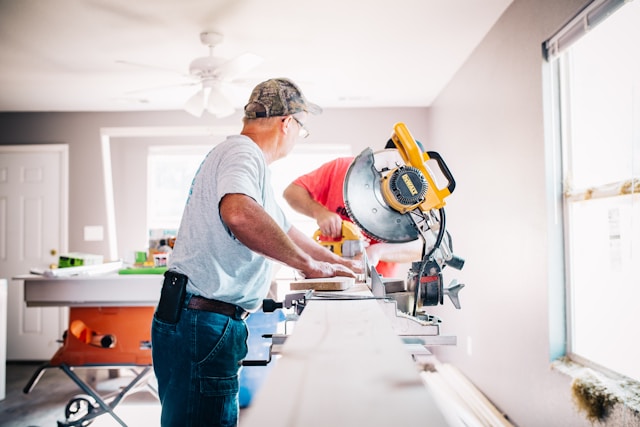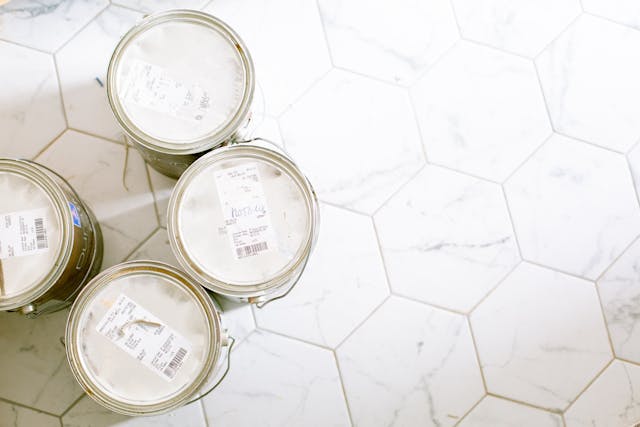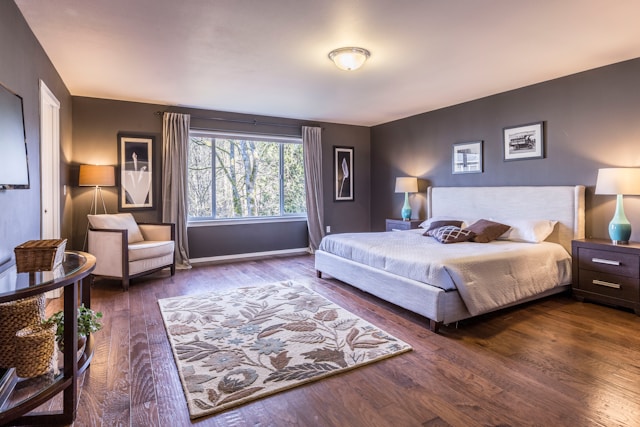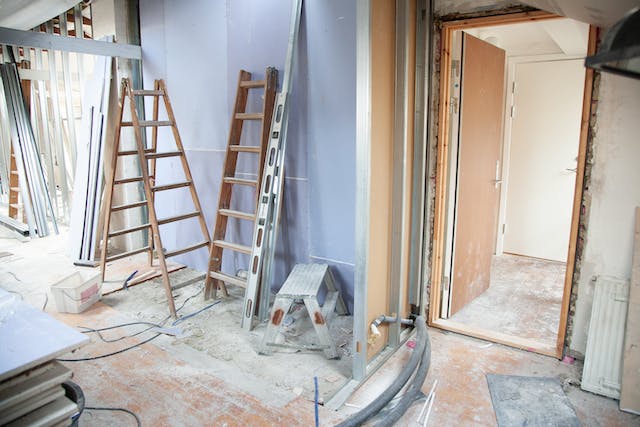Keep Your Omaha Home Mouse-Free This October

As the temperatures start dropping here in Omaha and we move deeper into October, something is happening that most homeowners don't think about until it's too late. While you're watching the Huskers, enjoying pumpkin spice lattes, and planning Halloween decorations, mice are trying to find a warm winter home. Unfortunately, your cozy Omaha home looks perfect.
After decades of helping families buy and sell homes throughout the Omaha metro area, from Dundee to West Omaha to Elkhorn, we've seen firsthand the damage that mice can cause and the stress they bring to homeowners. We've walked through countless homes where a small mouse problem escalated into a major issue, affecting not only the homeowners' quality of life but also their property value and sale potential. That's why we want to talk with you today about why October is critical for mouse prevention and what you need to do right now to protect your home.
Did you know that mouse behavior changes significantly in October, throughout the Omaha area? As our beautiful fall weather gives way to colder temperatures, mice become increasingly motivated to find indoor shelter. Unlike some pests that die off or go dormant in winter, mice remain active throughout the year. They are particularly aggressive about finding warm nesting sites as winter approaches. Once they've established themselves in your home, they're tough to evict.
The reality is that mice are more than just an unpleasant surprise when you open your pantry. These small rodents pose serious threats to both your health and your property. They're known carriers of dangerous diseases. Mouse-borne disease can spread through their droppings, urine, and saliva. Mice also constantly chew and gnaw to prevent their teeth from overgrowing. This means they'll chew through just about anything in your home, including electrical wiring, which creates a genuine fire hazard. In fact, mice are estimated to be responsible for thousands of house fires each year across the United States.
From a real estate perspective, evidence of mice or rodent damage is one of the most common issues that derail home sales or lead to significant price reductions during negotiations. Home inspectors know exactly what to look for, and buyers understandably get very concerned when they see signs of rodent activity. Taking preventive action now protects not only your daily comfort but also the value of your home as an investment.
To effectively keep mice out of your Omaha home, it is helpful to understand your enemy and just how capable these small creatures are. Mice are remarkably athletic and opportunistic. They can jump up to a foot high, climb almost any rough vertical surface, and squeeze through openings as small as a dime. Yes, you read that right. If a pencil fits through a gap, a mouse can fit through it, too. They're primarily nocturnal, which is why you might not see them even if they're living in your walls. And they're not picky eaters. Mice are opportunistic feeders who will happily snack on everything from your pet's food to the crumbs behind your refrigerator to the seeds in your garage.
One female mouse can give birth up to ten times per year, with each litter containing up to a dozen babies. This means that a minor issue can quickly escalate into a major infestation within just a few months. This is precisely why October is so crucial for prevention. You can keep them out now before they establish nesting sites. In that case, you avoid the much bigger problem of trying to eliminate an established mouse population in the middle of winter.
You need a solid home inspection strategy for October. The foundation of mouse prevention is knowing where they might get in and blocking those entry points before the mice find them. This month, while the weather is still relatively mild and you can work comfortably both inside and outside, it's a good time to conduct a thorough inspection of your home's exterior.
Start by strolling around the entire perimeter of your house on a sunny day when you can see clearly. Get down low and really look at your foundation. You're searching for any cracks, gaps, or holes. Pay particular attention to where different materials meet, such as where the foundation meets the siding or where the brick meets the wood trim. These transition points often have small gaps that are perfect mouse highways.
Check every door, and we mean every door. Your front door, back door, garage doors, and any basement or crawlspace entrances should all be inspected. Inspect the gap between the door and the frame and examine the condition of the weatherstripping at the bottom. Even a quarter-inch gap under a door is an open invitation to mice. Run your hand along the door frame when the door is closed. If you can feel air movement, mice can get through.
Windows are another common entry point, particularly in older Omaha homes with original windows. Check where the window frame meets the siding, look for gaps in the caulking, and inspect any damaged screens. Basement windows are especially vulnerable and often overlooked.
Now comes the tricky part that many homeowners miss: utility entry points. Walk around your home and locate every place where something enters your house from outside. This includes electrical lines, cable and phone lines, gas lines, water pipes, dryer vents, bathroom exhaust vents, and any other penetrations through your walls or foundation. These utility entry points are often surrounded by gaps that were never properly sealed during installation, and they serve as superhighways for mice.
Don't forget to look up. Check your roof line, eaves, and the areas where your roof meets your walls. Look for gaps around chimneys, inspect the condition of vent covers, and examine any areas where soffits might have gaps or damage. Mice are excellent climbers, and they'll happily use tree branches, utility lines, or rough siding to reach your roof and find a way into your attic.
Finally, scrutinize your garage. Garage doors rarely seal perfectly, and the gap under a garage door is often more than sufficient for mice to enter. Once inside your garage, mice have easy access to storage boxes, pet food, and usually entry points into your main living space.
Once you've identified potential entry points, it's time to seal your home from the invaders. This is where many homeowners make critical mistakes by using the wrong materials. Mice can chew through a variety of materials, including wood, plastic, rubber, vinyl, and even soft metals like aluminum. You need to use materials they can't defeat.
For small holes and gaps up to about half an inch in diameter, steel wool is your best friend. Mice absolutely hate chewing on steel wool because it irritates their mouths, and they struggle to get through it. Stuff steel wool tightly into holes, then seal over it with caulk or expanding foam to hold it in place. For slightly larger gaps, hardware cloth, which is essentially a heavy wire mesh, works beautifully. Cut it to size and secure it over openings using screws and washers.
Around utility entry points, use a combination approach. Pack the gap around pipes or wires with steel wool, then seal everything with expanding foam rated for outdoor use. Once the foam has cured, you can trim off the excess and paint it if necessary for aesthetic purposes. For significant gaps or holes in your foundation or exterior walls, you'll need more substantial material, such as hydraulic cement or mortar.
Door sweeps are an inexpensive and effective solution for gaps under doors. Look for heavy-duty brush-style sweeps or rubber seals that sit tight against the threshold. For your garage door, replace worn bottom seals. These are readily available at home improvement stores and are relatively easy to install yourself.
Around windows, remove old, cracked caulk and apply fresh exterior-grade caulk. Ensure you're using a high-quality product that remains flexible in response to temperature changes, which is particularly important in Omaha, where significant temperature fluctuations occur between seasons.
For basement window wells, consider installing well covers to prevent water from entering. These not only prevent mice from accessing your foundation windows but also keep out leaves, water, and other debris.
Dryer vents and bathroom exhaust vents should have covers with functional dampers that close when not in use. If yours are broken or missing, replace them. These vents are warm, attractive entry points for mice, and a proper cover costs less than twenty dollars but provides significant protection.
Your yard is the staging area where mice live before they attempt to enter your home, so making your outdoor space less mouse-friendly is an integral part of your overall strategy. During October, while you're doing yard cleanup anyway, consider mouse prevention strategically.
Keep your grass mowed short through the fall. Tall grass provides cover for mice, making your yard more attractive to them. Remove leaf piles, brush piles, and any other debris where mice might hide or nest. If you have a compost pile, it should be stored in a sealed container rather than an open pile, and it should be located a safe distance away from your house.
Firewood storage is a significant issue we encounter in many Omaha homes. Stacked firewood provides a perfect habitat for mice, offering numerous hiding spots and sound insulation. If you heat with wood or enjoy fires in your fireplace, store your firewood at least twenty feet away from your house and at least eighteen inches off the ground on a rack. Only bring inside what you'll burn within a day or two, and inspect each piece as you bring it in.
Tree branches contacting or hanging over your roof create bridges that deliver mice right to your home. This month, before the trees go dormant, trim back any branches that come within six feet of your house. This also helps prevent storm damage during winter weather, so it's a win-win maintenance task.
If you have shrubs planted right against your foundation, consider whether they're worth the risk. Dense shrubs touching your house provide cover for mice right where you least want them. At a minimum, keep them trimmed back so there's air space between the foliage and your walls. Better yet, consider replacing foundation plantings that sit right against the house with landscaping that's set back a couple of feet, creating a clear zone around your foundation.
Bird feeders are another consideration. We love watching birds here in Omaha, but bird feeders are essentially buffet-style feeding stations for mice. The seeds that fall to the ground are irresistible to rodents. If you feed birds, use feeders with effective seed catchers, place them a safe distance away from your house, and clean up fallen seeds regularly. Consider taking feeders down for the winter months when mice are most desperate for food and most likely to become a problem.
Even if you've sealed every possible entry point, mice may still find a way in. That's why making the inside of your home as unattractive as possible to mice is your second line of defense. This is all about eliminating food sources and potential nesting materials.
Food storage is critical. A mouse's keen sense of smell will draw them to any accessible food. Everything in your pantry should be in airtight containers made of glass, metal, or heavy-duty plastic. Those cardboard boxes and flimsy plastic bags that food comes in are no match for a determined mouse. Cereal, pasta, rice, flour, sugar, pet food, and any other dry goods need to be transferred to mouse-proof containers. Yes, it's an investment in containers. Still, it's much less expensive than replacing contaminated food and dealing with mouse infestation.
Pet food deserves special attention because it's often overlooked. Don't leave pet food sitting out all day. Instead, feed your pets on a schedule and pick up any uneaten food within an hour. Store bags of pet food in sealed metal containers, not just the original bag. Clean up any spilled food immediately, including pieces of kibble that roll under cabinets or appliances.
Your kitchen requires regular deep cleaning with mice in mind. Pull out your stove and refrigerator a few times each year and clean behind and under them. Crumbs and food particles accumulate in these areas, and they're like gourmet meals for mice. Clean under your dishwasher if accessible. Periodically, wipe down the insides of cabinets and drawers, and don't forget the tops of cabinets if they don't reach the ceiling. Vacuum or sweep daily, paying particular attention to corners and the edges where floors meet walls.
Garbage management matters more than most people realize. If you use trash cans with tight-fitting lids both inside and outside your home, you could have more control over your mouse population. Take out your indoor trash daily, or every other day. Don't let it pile up or overflow. Outside, ensure your garbage cans have secure lids and are stored away from your house, if possible. Clean your trash cans regularly to remove food residue and odors.
Clutter is a mouse's best friend because it provides hiding spots and nesting materials. Take a hard look at your storage areas this October. Basements, attics, garages, and closets packed with boxes and clutter are ideal habitats for mice. Go through your stored items and discard anything you no longer need. What you do keep should be stored in sealed plastic bins rather than cardboard boxes, as mice can easily chew through these, and they also provide nesting material. Elevate stored items off the floor, when possible, especially in basements and garages.
Paper, fabric, and insulation are all potential nesting materials for birds. Don't store newspapers, magazines, or cardboard in areas where mice might nest. If you have fabric items in storage, like off-season clothing or linens, keep them in sealed plastic containers. Check your attic and basement insulation for any damage or disturbance, which could indicate mouse activity.
While nothing replaces good prevention and exclusion methods, some natural deterrents may provide an additional layer of protection and are worth incorporating into your October mouse-proofing efforts.
The most widely recommended natural mouse repellent is Peppermint oil, and there's some evidence that mice genuinely dislike the strong scent. The theory is that the intense smell overwhelms their sensitive noses, making an area less appealing. Soaking cotton balls in pure peppermint essential oil and placing them in areas where you've seen signs of mice or near potential entry points is an effective deterrent. You'll need to refresh them every week or two as the scent fades. Please place them in the backs of cabinets, in corners of the basement, near your water heater and furnace, and in your garage. Some people also add peppermint oil to their cleaning solutions and spray it along baseboards.
Other essential oils that may deter mice include clove oil, eucalyptus oil, and citronella oil. You can use these in the same way as peppermint oil. Some homeowners create a blend of different oils for a more potent effect.
Cayenne pepper and other hot spices are sometimes recommended because mice dislike the irritation. You can sprinkle cayenne pepper or make a spray with cayenne and water to apply around potential entry points. The downside is that it can be messy and needs frequent reapplication, especially outdoors.
It's essential to recognize that these natural deterrents serve as supplements to, not replacements for, proper exclusion and sanitation. They might help make your home slightly less attractive to mice, but they won't stop a determined mouse if there's easy access and plenty of food available.
Despite your best prevention efforts, you might discover that mice have already found their way into your home. The sooner you address an active infestation, the faster you'll resolve the issue. Learn to recognize the signs of mouse activity so you can act quickly.
Mouse droppings are the most obvious sign. They look like dark grains of rice, about a quarter inch long, and you'll typically find them along walls, in the backs of cabinets, under sinks, or in storage areas. Fresh droppings are dark and moist, while older ones are dry and gray in color. If you're finding droppings, you have active mice.
Gnaw marks are another telltale sign. Look for minor scratches or bite marks on food packaging, wooden furniture, baseboards, wires, or anything else that might be in a mouse's path. Fresh gnaw or chew marks will be lighter in color and become darker over time.
You might hear mice before you see them, especially at night when they're most active. Scratching sounds in walls or ceilings, squeaking noises, or the pitter-patter of tiny feet in your attic are all indicators of mouse activity.
Greasy rub marks along walls and baseboards can indicate the presence of mice. As mice repeatedly follow the same paths, the oils from their fur leave dark smudges on the ground.
A distinctive musky odor, particularly in enclosed spaces such as cabinets or closets, can indicate the presence of mice. The more mice you have, the more pungent the smell.
If you've confirmed the presence of mice, you need to act immediately. Traps are the most effective do-it-yourself solution. Modern snap traps are more effective and humane than older designs. Place them perpendicular to walls with the trigger end facing the wall, since mice typically run along walls rather than across open floors. Bait them with peanut butter, which is more effective than cheese despite the old cartoons. Other good baits include chocolate, dried fruit, or a combination of peanut butter and oats.
Check traps daily and always wear gloves when handling them. Dispose of dead mice in sealed plastic bags in your outdoor trash. Clean the area where you find the mouse with a disinfectant solution. Continue trapping until you go for several days without catching anything.
For those who prefer not to harm mice, humane live-catch traps are available. The key with these is that you must check them frequently and release captured mice at least a mile from your home. If you release them in your yard, they'll come right back inside.
Sometimes, despite doing everything right, a mouse problem becomes more than you can handle on your own. As real estate professionals who've seen every possible scenario, we can tell you that there's no shame in calling for professional help, and in some cases, it's absolutely the right decision.
You should consider professional pest control if you're catching more than a couple of mice despite your best efforts, if you're seeing mice during the day, which indicates a larger population, if you're finding droppings in multiple areas of your home, if you smell a strong musky odor, or if you've discovered mouse damage to your home's structure or wiring. Professional pest control companies use more effective treatments and products and can identify entry points and attractants that you might miss.
Certified, trained pest control professionals conduct a thorough inspection of your property, identify common entry points, develop a comprehensive treatment plan, seal entry points using professional-grade materials, set up strategic trapping or baiting stations, and schedule follow-up visits to ensure the problem is resolved. They can also help you understand what attracted the mice in the first place and advise on long-term prevention strategies.
When choosing a pest control company in Omaha, look for one that's licensed and insured, has good reviews and references, provides a detailed written estimate, explains its methods clearly, and offers some guarantee on its work. Don't be afraid to ask questions about what products they'll use, whether they're safe for children and pets, and what you'll need to do to prepare.
The cost of professional pest control will differ depending on the severity of your problem will dictate. Still, most Omaha-area companies charge between $150 and $400 for an initial treatment with follow-up visits. While that may seem expensive, it's a reasonable investment compared to the cost of ongoing mouse damage, potential health risks, and the impact on your home's value if a mouse problem is discovered during a home inspection.
As members of the Heim-Berg Team who have lived and worked in Omaha for many years, we want to be completely honest with you about how mouse problems affect home values and sales. When we're preparing a home for sale, evidence of rodent activity is one of the issues we're most concerned about. Certified and trained home inspectors spot the signs and report any evidence they find. Buyers react very strongly to rodent issues, and it's not uncommon for them to either walk away from a deal entirely or demand significant concessions.
We've seen sales fall through because buyers discovered mouse droppings in an attic or basement during their final walk-through. We've had to negotiate thousands of dollars off sale prices to account for pest treatment and damage repair. In one memorable case, a seller had to replace significant portions of attic insulation that mice had contaminated, incurring a cost of over $5,000.
A home with a documented history of professional pest control treatment and current exclusion measures in place is more attractive to buyers than a home where prevention was never addressed. It shows that you've been a responsible homeowner who takes maintenance seriously.
If you're planning to sell your Omaha home in the next year or two, October prevention is an investment in your future sale. It's much easier and less expensive to prevent mice infestations than to remediate them and repair the resulting damage later. When we list a home, we want to honestly inform buyers that the home has been well-maintained and there are no pest issues. That peace of mind is valuable.
Even if you're not planning to sell anytime soon, think about your home as the significant investment it is. Regular maintenance and prevention, including mouse control, protect that investment and ensure your home retains its value. Every year that mice are allowed to live in your walls, chew on your wiring, and damage your insulation, your home's condition deteriorates. This October, prevention work is just as important as replacing your roof or maintaining your HVAC system.
We know that this article has covered a lot of information, and you may feel overwhelmed about where to start. Let's break this down into a manageable October action plan that you can tackle over a few weekends.
During the first weekend of October, focus on your exterior inspection. Walk the entire perimeter of your home and make a list of everything that needs to be sealed or repaired. Take photos if it helps you remember where issues are located. While you're at it, look at your yard and landscaping and note any changes that need to be made.
The second weekend is for sealing and repairs. Head to the hardware store with your list from the previous weekend and gather the necessary materials. Spend the day sealing entry points, installing door sweeps, caulking around windows, and addressing any gaps you find. This is the most critical prevention work you can do.
Weekend three is for yard work with mice in mind. Trim back trees and shrubs, move firewood away from the house, clean up leaf and brush piles, and generally make your yard less attractive to mice. This is also a good time to inspect and clean your gutters, which helps with both drainage and pest prevention.
The final weekend of October should focus on the inside of your home. Perform a deep clean of your kitchen, pulling out appliances to clean behind them. Go through your pantry and transfer everything to sealed containers. Organize storage areas to reduce clutter and set up any natural deterrents you'd like to try. If you've found any signs of mouse activity, set up traps and plan to check them daily.
Throughout the month, as you're doing these tasks, be on the lookout for any signs of existing mouse activity. The earlier you catch a problem, the easier it is to resolve.
Living in Omaha and working in real estate for as long as we have, the Heim-Berg Team has developed relationships with just about every home service professional in town. We know reputable pest control companies, reliable handypersons who can assist with repairs, and contractors who can handle larger exclusion projects if needed. We also understand what typical mouse issues look like in various types of Omaha homes, ranging from older historic properties in Benson and Dundee to newer construction in Elkhorn and Papillion.
Whether you're a current homeowner who wants to protect your investment, someone thinking about buying a home and wondering what to look for, or a seller who needs to make sure their property is in the best possible condition for the market, we're here to help. We don't just sell houses. We help people protect and maintain their most valuable asset.
If you have questions about your specific situation, would like recommendations for trusted local professionals, need advice on whether a mouse problem is affecting your home's value, or want to discuss your home maintenance concerns, we'd be glad to hear from you. Sometimes a quick conversation can point you in the right direction and save you a lot of time, money, and stress.
This October, while you're still enjoying the nice Omaha weather and before the mice become desperate for winter shelter, take the time to make your Omaha home as mouse-proof as possible. Your family's health, your property's value, and your peace of mind are all worth the effort. And remember, prevention is always easier and less expensive than dealing with an established infestation.
You could wait until you hear the scratching in your walls this winter or you could give us a call to chat about how you can protect your home.
Contact The Heim-Berg Team:
Phone: (402) 607 - 9024
Website: https://www.omahaarealiving.com/
We're your neighbors, your real estate advisors, and your partners in protecting your Omaha home investment. Let's work together to keep your home safe, healthy, and mouse-free this fall and winter.





.jpg)












